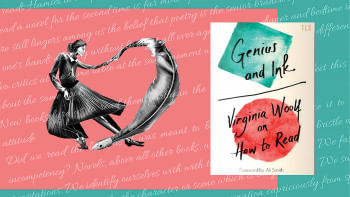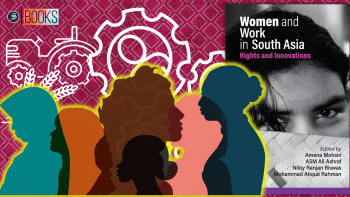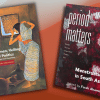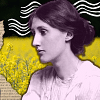A legacy of women's freedom in art

There is an immobilising power in mirrors. Dorian Gray fell prey to it, as did Snow White's Evil Queen, as did Narcissus, all obsessed with their reflections. In the chase scenes in action movies, too, it is usually inside a hall of mirrors that the predator is momentarily stumped, colliding into their own repetitions.
But it isn't the reflection that locks them in downfall. They're usually defeated by an incapacity for recognition and perception, for the inability to gauge what is in front of them. Selby Wynn Schwartz's debut novel is one such hall of mirrors, though it can move as much as it can immobilise.
The novel's beginning may be in 1885 Italy, which is where it opens, or in 1928 England, which is where it ends, or it may even be in 630 BCE, which is where, in the first page of a prologue, a narrator speaking in the first person plural changes their names to Sappho. In antiquity, Sappho was the great Poetess who lived on the island of Lesbos, born circa 620 BCE, authoring historic verses of love, desire, and passion for the self. Sappho's poems survive only in numbered fragments, and that is how Schwartz's Booker longlisted After Sappho is structured—in numbered, dated fragments that peak into (real) women's lives across the 19th to 20th centuries.
Lina Poletti, Italian writer, painter, feminist. Sibilla Aleramo, who would produce autobiographical representations of women's lives in 19th century Italy. Anna Kuliscioff, Ukrainian-born feminist, anarchist. Romaine Brooks, the American artist who profiled bohemian American and European faces. Eva Palmer, the famed performer and director who would revive ancient Greek life for the stage. Virginia Woolf, who wove power and grace into her stories of the individual's dance across gender, as England evolved in the background.
Schwartz's narrator speaks in the choral "we", and like a daisy chain, they connect all these women's shared yet individual experiences of feeling closed in, being violated, feeling misunderstood by society, until they all shed their names and managed to "escap[e] the century".
Like discovering lost scraps floating through time, the story flits back and forth between their years. We learn that the degrees of violence they encountered differed. For instance, according to Article 544 of the Penal Code of Italian law in 1893, young girls could be given in marriage by their fathers to the men who raped them. Rina Faccio, who would later become Sibilla Aleramo, met this fate, followed by a bloody miscarriage and a suicide attempt, until she shed that history, shed her family, and her name. Later, in 1905, a book called The Feminine Note in Fiction written by a man claimed that the novel as an artform was beginning to disappear as more and more women wrote and read it. In one of the most triumphant moments in the book, the narrator then recounts:
"Those of us who read the English papers in January 1905 were treated to the extraordinary spectacle of Virginia Stephen raising her eyebrows in print."
"If there were faults with women writers, Virginia pointed out, these merely demonstrated the dire need to educate girls as rigorously as the boys of Cambridge; if our novels were to be judged, let the critics wait a century before pouncing. Lastly, as proof that women writers might range freely from poignant details to the vastness of truth and tragic form, Virginia offered the indisputable example of Sappho."
And so these women, each in their own realms, take after Sappho to chase after freedom, but they're haunted also by Cassandra, who appears recurrently throughout the text to cry out prophesies. "A poet is someone who stands on the door sill and sees the room before her as a sea whose waves she might dive through. … A poet is someone who swims inexplicably away from the shore, only to arrive at an island of her own invention", Schwartz writes. Her characters, thus, make history throughout the novel by battling for suffrage, for autonomy of body, mind, and artistic expression, for a fluid identity marked by self-invented labels and aesthetic choices.
Some flaws then emerge in this picture of women's history being formed. As the narrator describes some of these women as volatile, alchemical, violent, luminous waves, one wonders if a woman of agency is always meant to come across as an exotic creature of fantasies. Must we always inspire such awe? And, while there is nothing wrong with choosing to situate a particular history within the Western canon, there is something to be said when that narrative tries to speak for an all-inclusive "we", while reflecting primarily the struggles of women of the white race. We see few (if any) women of colour handpicked for this garland of solidarity, and no mention of the issues of class, race, and discrimination that intersect their feminisms.
One should keep these failings in mind when they read this book, but it is nonetheless worth reading.
Despite its stories being drawn from reality, Schwartz asserts in her bibliographic note that After Sappho is a work of fiction. As a reader, you don't feel the need to question this. The text echoes and mutates the same approaches to storytelling as the real-life subjects of this novel once took, melding images, facts, movements and memories to produce narratives that would turn into mythology, into history, ripe with all its power and convenient forgetfulness. Fiction doesn't just mean made up stories, it means stories that we choose to believe in—and Schwartz's wispy, musical prose and her decision to fragment history into intimate, diary entry-like selections of memory make the reader reevaluate whatever recognition we find in this choral call.
Sarah Anjum Bari is Books and Literary Editor at The Daily Star. Reach her at [email protected] and @wordsinteal on Instagram and Twitter.

 For all latest news, follow The Daily Star's Google News channel.
For all latest news, follow The Daily Star's Google News channel. 










Comments